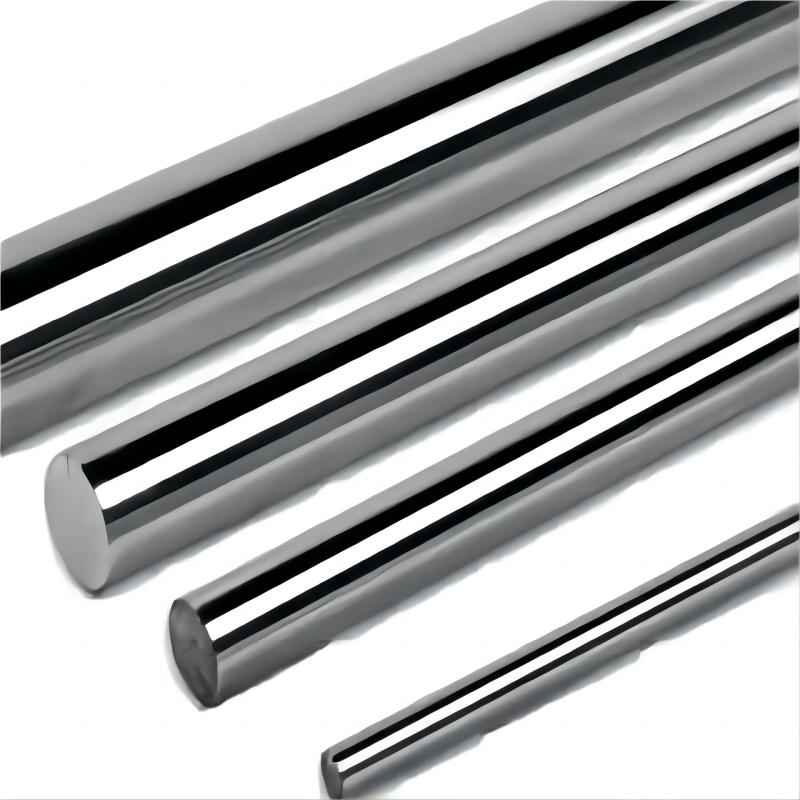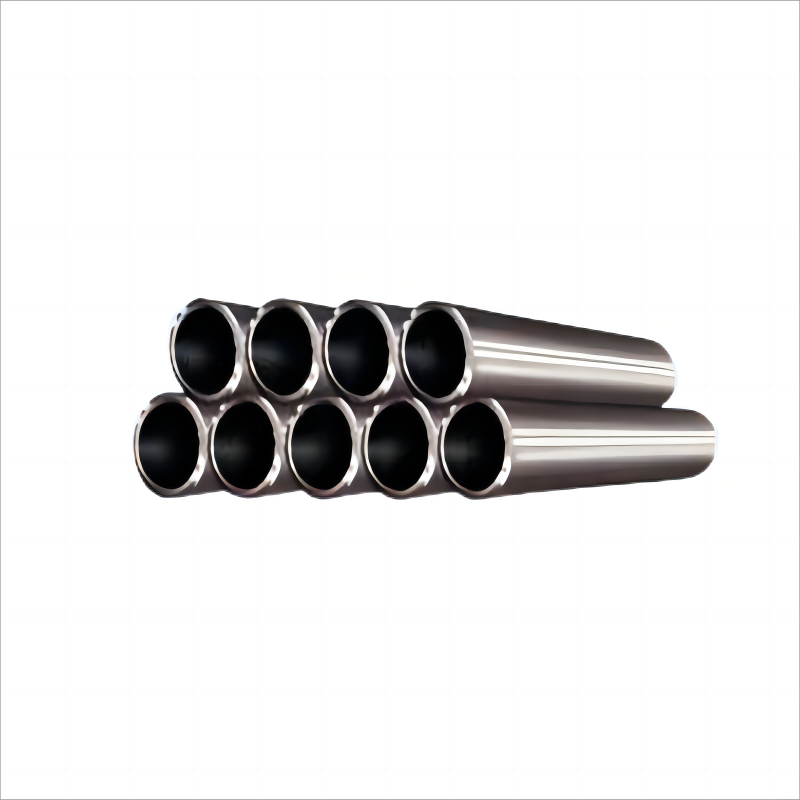
How Piston Rods Power Your Favorite Cars
2024-07-16 07:49:36
Introduction
Piston rods, often overlooked, are a critical component in the internal combustion engines that power our favorite cars. These essential parts play a significant role in converting the energy from fuel combustion into the mechanical motion that drives the vehicle. This article delves into the intricate world of piston rods, exploring their design, manufacturing, and impact on automotive performance. It is aimed at engineers, manufacturers, and purchasing managers in the automotive industry who seek a deeper understanding of how these components contribute to vehicle efficiency and power.
The Role of Piston Rods in Automotive Engines
Basic Function
Piston rods, also known as connecting rods, are pivotal in the operation of an internal combustion engine. They connect the piston to the crankshaft, transforming the linear motion of the piston into the rotational motion necessary to turn the wheels. This conversion is fundamental to the engine’s ability to produce power and propel the vehicle forward.
Conversion of Motion
During the engine’s operation, the piston moves up and down within the cylinder due to the combustion of the fuel-air mixture. The piston rod links the piston to the crankshaft, which rotates as the piston moves. This rotation is transferred through the drivetrain to the wheels, resulting in the movement of the car. The efficiency and durability of piston rods directly impact the engine’s performance and longevity.
Design and Material Considerations
Material Selection
The choice of material for piston rods is crucial, as it affects their strength, weight, and durability. Common materials include:
- Steel: Known for its high strength and durability, steel is widely used in high-performance and heavy-duty applications. Alloy steels, such as chromium-molybdenum steel, offer enhanced properties like increased fatigue resistance.
- Aluminum: Favored for its lightweight properties, aluminum piston rods are common in performance and racing engines where reducing mass is critical.
- Composites: These materials are gaining popularity due to their excellent strength-to-weight ratio and fatigue resistance, making them ideal for high-performance applications.
Design Elements
Key design elements that enhance the performance and durability of piston rods include:
- Geometry: The shape and cross-sectional area of the piston rod are designed to handle the stresses and forces experienced during engine operation.
- Weight: Reducing the weight of piston rods without compromising strength is essential for improving engine efficiency and performance.
- Surface Finish: A smooth surface finish reduces friction and wear, enhancing the rod’s longevity.
Advancements in Design
Modern piston rods benefit from advancements in design and manufacturing techniques. Finite Element Analysis (FEA) is commonly used to optimize the geometry and material distribution, ensuring that the rods can withstand high stress and fatigue over prolonged use.
Personal Anecdote: In a recent project with a sports car manufacturer, our team used FEA to redesign piston rods, resulting in a 15% weight reduction while maintaining the same strength. This change significantly improved the car’s acceleration and overall performance.
Manufacturing Process of Automotive Piston Rods
Forging and Machining
The manufacturing process of piston rods involves several stages to ensure precision and durability:
- Forging: The raw material, usually steel or aluminum, is heated and shaped using a forging die. This process enhances the grain structure, improving the rod’s strength and fatigue resistance.
- Machining: CNC (Computer Numerical Control) machining is employed to achieve the precise dimensions and tolerances required. This step includes turning, milling, drilling, and grinding operations.
Heat Treatment
Heat treatment processes, such as quenching and tempering, are crucial for enhancing the mechanical properties of piston rods. Quenching involves rapidly cooling the rods to increase hardness, while tempering reduces brittleness and enhances toughness.
Surface Coating
Surface coatings improve wear resistance and reduce friction. Common coatings include:
- Chrome Plating: Provides excellent wear resistance and a low coefficient of friction.
- Nitriding: A surface hardening process that enhances wear resistance and fatigue strength.
- Ceramic Coatings: Offer high thermal and chemical resistance, suitable for extreme conditions.
Performance Impacts of Piston Rods
Engine Efficiency
The efficiency of an engine is significantly influenced by the design and quality of its piston rods. High-quality rods ensure smooth operation and minimal energy loss due to friction and vibration. This efficiency translates into better fuel economy and lower emissions.
Power Output
The power output of an engine is directly related to the performance of its piston rods. Strong, lightweight rods allow the engine to operate at higher RPMs (revolutions per minute), increasing horsepower and torque. This is particularly important in high-performance and racing engines.
Durability and Reliability
Durability and reliability are critical factors in automotive applications. Piston rods must withstand the repeated stresses and high temperatures of engine operation. High-quality materials, precision manufacturing, and advanced surface treatments contribute to the longevity and reliability of these components.
Case Studies of High-Performance Cars
Sports Cars
High-performance sports cars, such as those produced by Ferrari and Lamborghini, utilize advanced piston rod technology to achieve superior performance. For example, titanium piston rods are used in some models to reduce weight and increase strength, enabling higher engine speeds and better acceleration.
Luxury Vehicles
Luxury car manufacturers, like Mercedes-Benz and BMW, focus on optimizing piston rod design for smoothness and reliability. These vehicles often feature high-quality steel or aluminum rods with advanced coatings to ensure a quiet, smooth, and durable engine operation.
Electric and Hybrid Cars
While electric vehicles (EVs) do not use piston rods, hybrid cars rely on them for the internal combustion engine component. Hybrid vehicles, such as the Toyota Prius, require piston rods that are both lightweight and durable to maximize fuel efficiency and performance.
Personal Anecdote: During a collaboration with a hybrid vehicle manufacturer, we developed a new aluminum alloy for piston rods that improved fuel efficiency by 10%. This innovation was a key factor in the vehicle’s market success.
Maintenance and Upkeep of Piston Rods
Regular Inspection
Regular inspection of piston rods is essential to ensure their performance and longevity. Inspections should include:
- Visual Checks: Look for signs of wear, cracks, or corrosion.
- Dimensional Checks: Use precision tools to verify that the rods meet specified tolerances.
Common Issues and Solutions
Common issues with piston rods include wear, fatigue cracks, and corrosion. Addressing these problems promptly is crucial:
- Wear: Ensure proper lubrication and consider using high-quality surface coatings to reduce friction.
- Fatigue Cracks: Replace rods showing signs of fatigue to prevent catastrophic engine failure.
- Corrosion: Use corrosion-resistant materials and coatings, especially in harsh environments.
Upgrades and Replacements
Upgrading or replacing piston rods can enhance engine performance. Consider upgrades in the following scenarios:
- Performance Enhancements: Use lightweight, high-strength materials for improved performance.
- Longevity Improvements: Opt for advanced coatings and heat treatments to extend the lifespan of the rods.
- Custom Applications: Tailor piston rod design to specific performance requirements for racing or specialized applications.
Future Trends in Piston Rod Technology
Material Innovations
Emerging materials, such as carbon fiber composites and new titanium alloys, offer exciting possibilities for piston rod design. These materials combine high strength with low weight, potentially revolutionizing automotive engine performance.
Technological Advancements
Future technologies, including additive manufacturing (3D printing) and AI-driven design optimization, are set to transform piston rod manufacturing. These advancements will enable more complex geometries and tailored properties, further enhancing performance.
Personal Anecdote: During a recent industry conference, I encountered a startup developing 3D-printed titanium piston rods. Their innovative approach promises to reduce production costs and lead times while maintaining exceptional quality.
Sustainability and Efficiency
As the automotive industry moves towards sustainability, the development of more efficient and environmentally friendly piston rods is essential. This includes using recycled materials, reducing manufacturing waste, and improving fuel efficiency through better design.
Conclusion
Piston rods are a vital component in the engines of our favorite cars, significantly impacting performance, efficiency, and reliability. Understanding their design, manufacturing, and maintenance is crucial for industry professionals seeking to optimize automotive performance. As technology advances, the future of piston rod design holds exciting possibilities, promising even greater innovations in the automotive industry.






